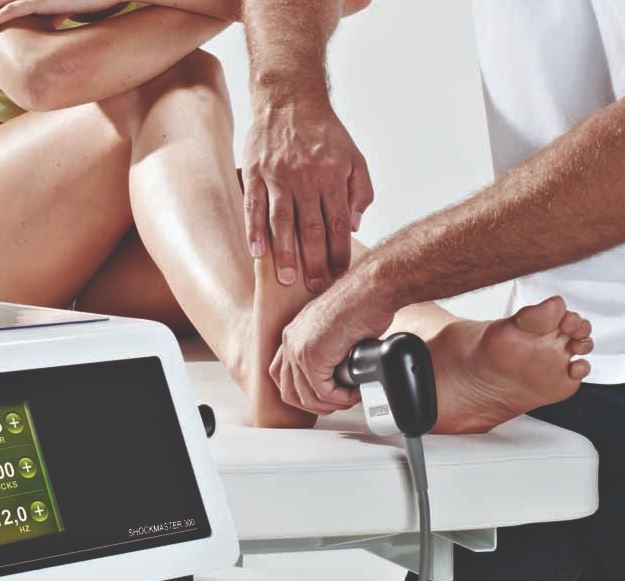
Shockwave therapy is a non-invasive treatment designed to address various musculoskeletal issues. It can effectively help with chronic pain, tendon and muscle injuries, as well as conditions such as plantar fasciitis and tendonitis.
It’s natural for some individuals to have worries about any possible discomfort linked to shockwave therapy and what the procedure entails. We outline what you can anticipate during a session.
Pre-Treatment Consultation
Prior to the shockwave treatment, you’ll typically undergo a consultation where the practitioner will gather information about your injury and medical history.
The therapist will perform a thorough physical examination to assess the injured area. This will include checking your range of motion and, if needed, conducting imaging tests like ultrasounds or X-rays to determine the extent of the injury.
The practitioner will also talk with you about your symptoms, such as the duration of your pain, any previous treatments you’ve undergone, and how the injury has affected your everyday life. A treatment plan will be proposed, and the precise number of sessions and their frequency will be tailored to fit the details and severity of your injury.
Positioning & Preparation
When you’re getting treatment for a specific area like your shoulder, elbow, knee, or foot, you’ll be asked to either lie down or sit in a way that feels comfortable for you. The aim is to make it easy for the practitioner to reach the area that needs care. This might involve getting onto an examination table or settling into a comfy chair, based on where you’re being treated. The practitioner will assist you in finding the best position to ensure you feel relaxed and receive effective treatment.
When you’re ready, the practitioner will carefully cleanse the targeted area to remove any dirt or oils that might interfere with the treatment’s effectiveness. After that, a special gel will be applied to your skin. This gel helps facilitate the smooth transmission of shockwaves and ensures the device is used effectively.
The Shockwave Treatment Process
The practitioner will use a portable device that is placed directly on the skin over the area of focus. This device sends bursts of high-energy sound waves into that particular region. This device is usually connected to a shockwave therapy machine that produces the shockwaves and controls their intensity.
Shockwaves can be classified into two types: focused and radial. Focused shockwave therapy aims to reach deeper layers of tissue, while radial waves disperse more widely. This makes radial shockwave therapy more suitable for addressing issues in surface-level tissues.
During the session, the practitioner will glide the applicator over the targeted area, delivering pulses or taps to the tissue. Most individuals report experiencing mild to moderate discomfort, often likened to a series of sharp taps or a stinging or vibration like feeling. The intensity of these pulses can be adjusted to suit your comfort, so it’s important to communicate with the practitioner if you begin to experience any significant discomfort.
Additionally, the sensation may differ depending on the area being treated; regions with more muscle or fat might feel less intense compared to those with bone or dense connective tissue.
How Long is a Shockwave Therapy Session?
A standard shockwave therapy session typically ranges from 5 to 15 minutes, depending on the treatment area and the condition’s severity.
Post-Treatment Care
Following the shockwave treatment, you may notice some immediate and temporary effects. It’s typical to experience a slight ache or dull soreness in the area that was treated, much like what you might feel after exercising. This reaction is completely normal, as the shockwaves promote healing.
Any discomfort you feel generally fades within a few hours to a couple of days, and you might notice that the treated area feels tighter or a bit more sensitive right after the session.
How Long Should You Rest After Shockwave Therapy?
It’s a good idea to avoid intense vigorous physical activities or high-impact workouts for the following 24-48 hours to allow the treated area to heal properly.
Your practitioner might also suggest some light stretches or rehabilitation exercises to enhance the benefits of the shockwave treatment and promote a quicker recovery.
Follow-Up Sessions
Shockwave therapy is usually provided in a series of sessions, with most individuals needing around 3 to 5 treatments to achieve the best results. The specific number of sessions can vary based on how severe the condition is and how well you respond to the therapy. Each session generally lasts for the same amount of time and has a similar intensity, though your therapist might adjust the settings or target areas depending on your progress.
If you’re dealing with a chronic issue, you might be recommended to have maintenance sessions every few months to help manage your condition or prevent future injuries.
Pairing shockwave therapy with other treatments like physiotherapy and stretching exercises can significantly improve the healing process.
Shockwave Therapy Treatment
Shockwave therapy is an effective option to speed up healing, alleviate pain, and enhance mobility. At Morley Chiropractic Clinic, we focus on gentle, non-surgical methods that promote quick recovery. Our skilled practitioners will evaluate your situation and create a personalised treatment plan just for you. If you are interested in finding out more about our shockwave therapy sessions then please get in touch with us today.












